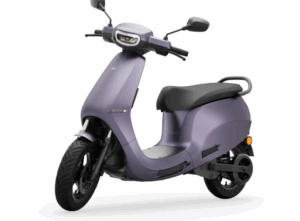Karthik Krishnamurthi, Head of Sales and Marketing – Hitachi Energy India Limited
The power sector is in the midst of an energy transition towards carbon neutrality and the country is striving for achieving the renewable energy target. And to achieve this the Indian power industry needs to develop significant energy management capabilities. Hitachi Energy India is continuing to work towards achieving the milestone of carbon neutrality in its operations by 2030. Through its Sustainability 2030 plan and targets, Hitachi Energy India is championing the urgency of a clean energy transition through innovation and collaboration – towards a carbon-neutral future.
1. How is the future of the Energy sector in India?
The Indian power sector has shown tremendous growth. The pursuit of India’s energy transition is robustly unified with the advancement of technology led by progressive digital transformative initiatives, which will offer accelerated development in the way equipment is designed, manufactured, and maintained.
Presently, the power sector is in the midst of an energy transition towards carbon neutrality and the country is striving for achieving the renewable energy target. To achieve this, the Indian power industry needs to develop significant energy management capabilities. Most urgently, the country requires grid modernization to ensure a sustainable energy transition. This will entail the adoption of smart digital grid solutions to manage the risk of grid instability, AI-enabled technologies, and systems to improve overall operational performance and enable integrated planning, and a higher degree of customer engagement. With its technology offering, Hitachi Energy India is geared up to advance a sustainable energy future, making energy systems more sustainable, flexible, and secure.
2. How can technology help address and meet the future demand?
Digital technologies such as low-cost sensors, data science, AI-ML, software-defined machines, and networks offer to continuously improve the performance of renewable assets, systems, and operations. Being a global technology and market leader in energy systems with a proven track record in pioneering solutions provides various high-tech methods like e-mesh™ that helps global customers to easily transition to this new distributed energy model. Further, from the field to the boardroom, we enable our customers to accelerate performance and stay ahead of the curve. The new-age automation solution, built using our proven MicroSCADA and RTU platforms, helps to monitor and control distributed energy resources.
From utilities to industries and transportation, our advanced products have been supporting the energy transition. In metro railways, for example, Hitachi Energy has provided special dry-type transformers that minimize environmental contamination and fire hazard, requiring low maintenance. These transformers are also powering, the Atal Tunnel, world’s longest highway tunnel located in Manali, India
Additionally, the company recently introduced the OceaniQ™ platform to help accelerate the clean energy transition. OceaniQ™ will result in greater volumes of wind power being efficiently harvested and integrated into the world’s energy system. This latest portfolio development from Hitachi Energy continues to demonstrate the company’s commitment to pushing the boundaries of innovation for sustainable offshore energy environment solutions, adding to an already extensive offering.
3. Tell us about your Launch of EconiQ™ portfolio and what are the unique features of this portfolio?
EconiQ™ is an eco-efficient portfolio for reducing environmental impact and increasing energy efficiency. EconiQ™’s portfolio is sustainability-oriented in design to deliver superior environmental performance compared to conventional solutions. EconiQ™ is a high-voltage offering that uses game-changing technology containing no sulfur hexafluoride (SF6) and has proven to significantly reduce carbon footprint throughout the entire lifecycle in live tank breakers and gas-insulated switchgear of various ratings. We are in the process of adding higher ratings to this range and expanding to dead tank breakers.
Transformers are critical for enabling an efficient and safe flow of electricity by adapting voltage levels. The EconiQ™ transformers have been developed using eco-design principles to maximize sustainability over the life cycle. Within the design, key aspects are further optimized such as enhanced energy efficiency and the responsible use of materials through processes such as recycling and waste disposal. The use of biodegradable insulation fluids with higher flash and fire points helps to safeguard surrounding ecosystems from pollution and increases safety for people. In the first phase, the EconiQ™ transformers will be available for liquid-filled applications.
4. Please shed light on some of the latest HVDC projects by Hitachi Energy in India?
Hitachi Energy, a market and technology leader in transmission, distribution, and grid automation solutions, has an impressive HVDC track record in India. The company has pioneered commercial HVDC technology and has delivered more than half of the world’s HVDC projects to date.
Some of the key milestone projects of Hitachi Energy in India – Raigarh-Pugalur UHVDC Link delivers at +/-800 kilovolt (kV), 6,000-megawatt (MW) stretches almost 1,800 kilometers to connect Raigarh in Central India to Pugalur in the southern state of Tamil Nadu, supplying electricity to serve around 80 million people.
Recently, Hitachi Energy was selected to provide an HVDC Light® transmission system to help bring 1,000 megawatts of power to Mumbai. The new HVDC link will help in increasing power from outside of the city by almost 50 percent. Power loads in cities are increasing, especially in densely populated areas where land is already scarce, and difficulties can arise whenever new right-of-way must be secured for traditional transmission lines. In these concerned areas, HVDC technology enables large amounts of high-quality electricity to be delivered with complete control, with a very compact transmission system.
Hitachi Energy India will take continuous steps to modernize the city and state grids, which will be essential to realizing the sustainability goals of the country.
5. What are the key things “Hitachi Energy” keeps in mind for sustainable energy?
Hitachi Energy, a global technology leader in transmission, distribution, and grid automation solutions is strongly working towards advancing a sustainable future for all. The brand reaffirms its long-standing focus on continuous improvement towards sustainable quality across the entire value chain – from suppliers and employees to customers and communities. The Net Zero carbon neutrality challenge is global and it’s about acting now, innovating, and collaborating across countries, industries, and societies. Together with customers, partners, and all stakeholders, we are advancing the world’s energy system to be more sustainable, flexible, and secure.
As a first step, Hitachi Energy India achieved 100 percent fossil-free electricity in its operations in India. The company has pursued several significant projects such as a 50 percent reduction in waste disposal, close to a quarter reduction in freshwater use, and also reduction of usage of hazardous substances and chemicals by 25 percent in our operations. This is in continuation to our sustainability goals aligning with the ‘Clean Water and Sanitation (SDG 6) and ‘Responsible Consumption and Production (SDG 12).
6. You have achieved 100 precent fossil-free electricity; tell us about this achievement?
India is on an ambitious journey to become carbon-neutral to meet the target of net-zero carbon emissions by 2070. Hitachi Energy, with an increased focus on the purpose of ‘Advancing a sustainable energy future for all, views India as a significant market with huge potential in renewable energy, smart grids, grid modernization, and the electrification of transportation and industries including data centers. By achieving 100 percent fossil-fuel electricity in its operations, the company has reduced its CO2 equivalent emissions by over 50 percent compared to 2019. This is the achievement of the first-step basis of the targets set out in our Sustainability 2030 plan. The targeted 50 percent reduction achieved ahead of the plan will amount to approximately 175-kilo tonnes of CO2 per year, equivalent to removing over 35,000 passenger cars off the road. Additionally, Hitachi Energy has also switched to green tariffs, bought Energy Attribute Certificates (EACs), and signed Power Purchase Agreements (PPAs) across our operations and facilities in 90 countries.
Looking ahead, Hitachi Energy India is continuing to work towards achieving the milestone of carbon neutrality in its operations by 2030. Through its Sustainability 2030 plan and targets, Hitachi Energy India is championing the urgency of a clean energy transition through innovation and collaboration – towards a carbon-neutral future.








